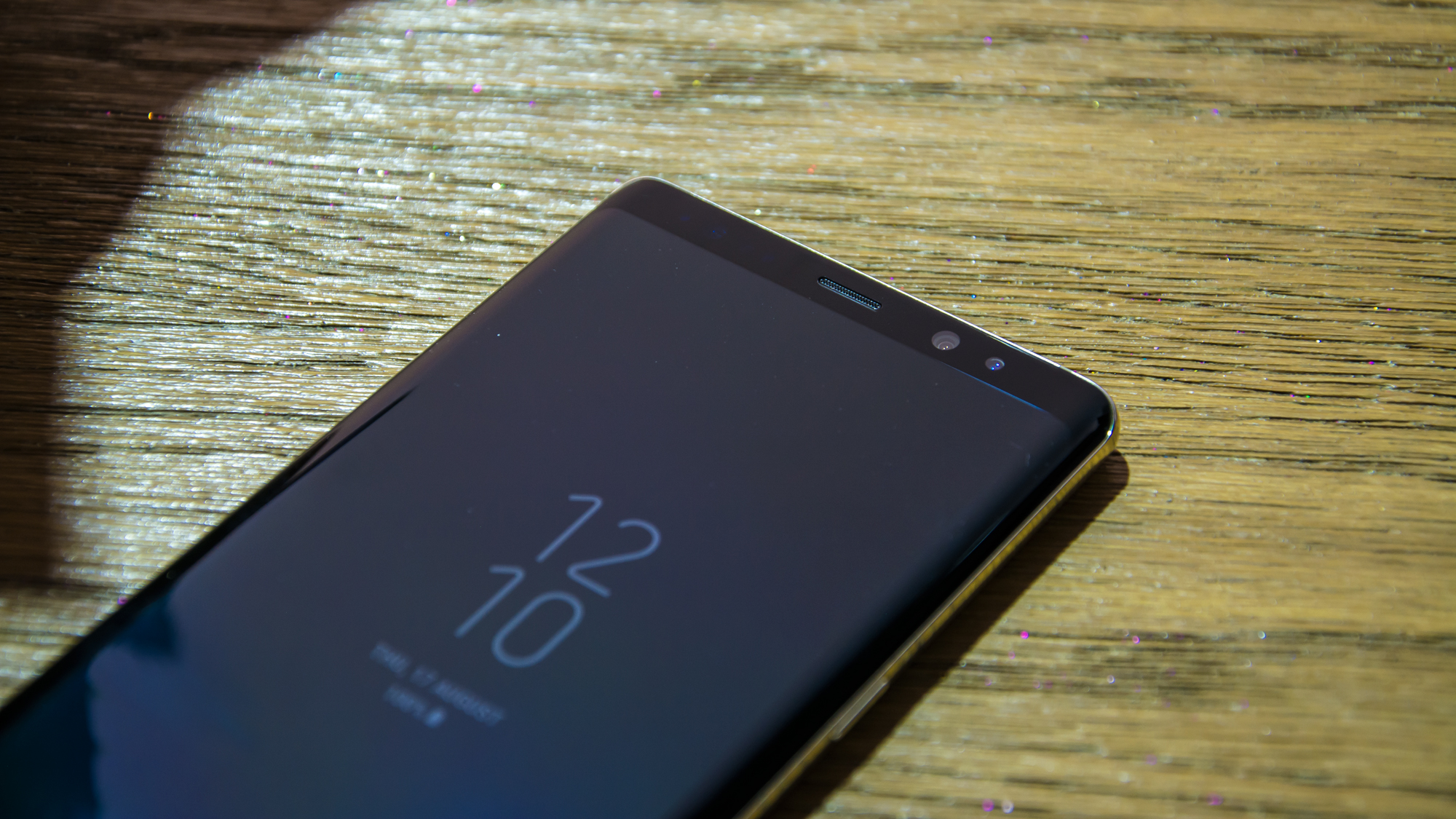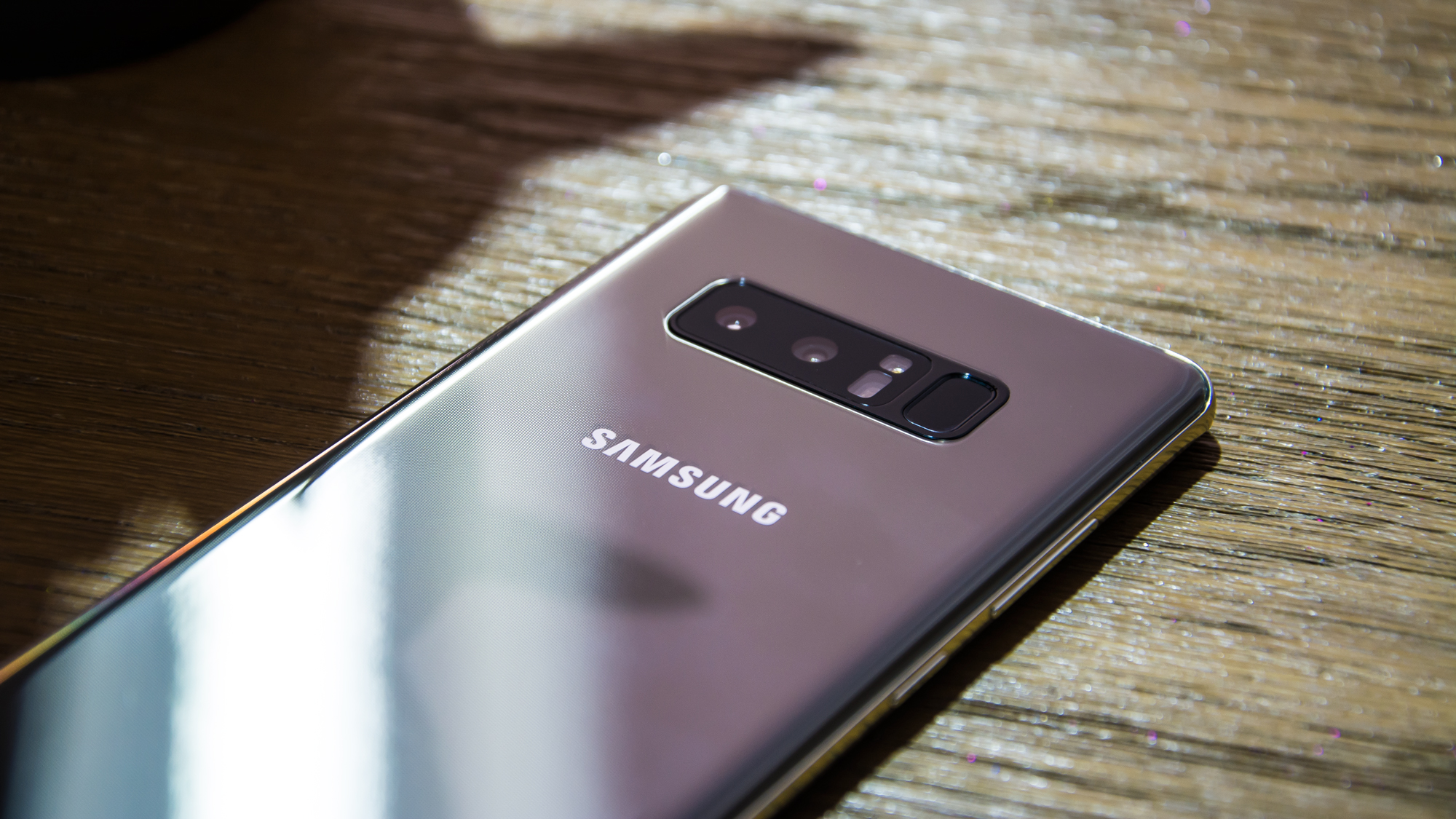Samsung Galaxy Note 8 review
A spectacular business phone, but is it worth the price?
The Samsung Galaxy Note 7 is a truly excellent phone - but unless you really need a stylus, there's little here to elevate over the similarly-superb Galaxy S8.
-
+
Excellent performance; Gorgeous screen; Camera quality is superb
-
-
Expensive; Troubling battery life

Specs and hardware
One of the main selling-points of the Galaxy Note range in years past was that it was more powerful that Samsung's flagship Galaxy S range, offering more grunt for power-users who wanted to multitask. While that's still true, it's somewhat redundant in this day and age, as the Galaxy S8 already offers more power than most users will ever need.
Nevertheless, if you're the kind of person that needs to squeeze every last drop of horsepower from your phone, then the Galaxy Note 8 will suit you - it carries the same octa-core Exynos 9985 chip as the Galaxy S8 and has 6GB of RAM compared to the S8's 4GB. The Note 8 scored very capably in our benchmarks, with a result of 2008 for single-core operations and 6614 for multi-core tasks - a pretty much identical result to the Galaxy S8 Plus.
It's more than powerful enough to run as many apps as you can reasonably throw at it without slowing down, including Adobe's mobile photo editing apps. The added power will also come in handy for anyone looking to use the Note 8 with DeX, as it'll be even better at desktop-style multitasking than the S8.
Enterprise
If you're an enterprise user, there are a few things that might attract you about the Galaxy Note 8. For one thing, the act of making notes with a stylus rather than a keyboard still remains more natural to many people, particularly those who may have used PalmPilots and other PDAs in years gone by.
There's also a wealth of security and management options thanks to Samsung's Knox security platform, which make administrating a fleet of Samsung devices much easier than trying to wrangle phones from multiple different manufacturers.
Last but not least, the Note 8 is compatible with Samsung DeX, the company's desktop docking solution that was introduced alongside the Galaxy S8. If you've already adopted DeX as part of your business IT setup, then the Note 8 will slip seamlessly into your existing deployment - and if not, it's an excellent opportunity to do so.
Battery
After what happened with the Note 7, Samsung made a huge point of mentioning the eight-point battery safety test that it put the Galaxy S8 through when it launched, and the Note 8 is no different. The company is keen to emphasise how rigorously it tested the Note 8's safety, and is trying to put its previous woes far behind it.

However, it appears that the company may have sacrificed some of the Galaxy S8's impressively long battery life in the name of safety. In our battery tests, the Note 8 managed a score of just 13h 38m, which lags roughly three hours behind the S8's result, and almost seven hours behind the S8 Plus.
Although the battery has to do some fairly heavy lifting, this is still a rather disappointing result from a flagship device in 2017. It's possible that Samsung is artificially throttling the battery's performance for the first few months of the Note 8's life, in case the Note 7's battery problems look like they're going to repeat themselves; if this is the case, a software update could fix this issue overnight.
As it stands, however, the current result is something of a let-down, but we'll be conducting more extensive testing in the coming weeks to confirm its authenticity.
Camera
Aside from the brand-new Infinity Display, the other big innovation that the Note 8 is bringing to the table is a new dual-lens camera. This is not just the first Note device to feature such a setup, but the first Samsung phone ever, with a f/1.7 wide-angle lens twinned with an f/2.4 telephoto lens with 10x digital and 2x optical zoom. Both use a 12-megapixel sensor, and both feature optical image stabilisation.
The results are truly stunning to behold. The Note 8's camera is one of the best smartphone cameras we've ever seen, with crystal-clear detail and excellent low-light performance to boot. This isn't hugely surprising, given that it uses the same basic technology as the S8's excellent camera, and in fact, the results are nearly identical.

The HDR has a tendency to be somewhat hit-and-miss, but when it does kick in the effects are superb, with minimal ghosting and haloing visible.
As with virtually all the latest major smartphones, you can shoot in 4K and 60fps, and there's also a number of additional shooting modes including slow-motion and timelapse. Samsung has also built in a number of Snapchat-style AR masks to the camera, should you wish to jazz up your selfies.
Verdict
The Galaxy Note range has always been something of a niche product line, but the Note 8 is possible the most specialised iteration yet. With a retail price of nearly 900, it's certainly not priced for the casual consumer. It's primarily targeted at business users, with powerful multi-tasking capabilities, support for Samsung's robust device management plans and the S Pen's enterprise-friendly note-taking features. However, unless note-taking is a vital part of how you use your smartphone, there's not much here that you can't find in the Galaxy S8.
In fact, in most of the ways that count, the Galaxy Note 8 is indistinguishable from the S8 Plus; the design is near-identical, the performance is neck-and-neck, and the screen is just as impressive. There are a few differentiators, the Note 8's signature S Pen being the most obvious one. There's also the dual-lens camera - a first for Samsung, and one that has paid off with a truly excellent snapper.
However, there's also the disappointing battery life, which is a serious black mark if accurate, and the rather eye-watering price. Even leaving these considerations aside, the vast majority of businesses would be better-served by one of Samsung's more mainstream flagships. While the Note 8 is a truly excellent device, you're better off with the S8 unless a stylus is an absolute must-have.
Verdict
The Samsung Galaxy Note 7 is a truly excellent phone - but unless you really need a stylus, there's little here to elevate over the similarly-superb Galaxy S8.
| Processor | Octa-core 2.3GHz Samsung Exynos 8895 / Qualcomm Snapdragon 835 |
| RAM | 6GB |
| Screen size | 6.3in |
| Screen resolution | 2,960 x 1,440 |
| Screen type | Super AMOLED |
| Front camera | 8-megapixel |
| Rear camera | 12-megapixel f/1.7, 12-megapixel f/2.4 |
| Flash | Dual-LED |
| GPS | Yes |
| Compass | Yes |
| Storage (free) | 64GB |
| Memory card slot (supplied) | mcrosSD |
| Wi-Fi | Wi-Fi 802.11 a/b/g/n/ac |
| Bluetooth | 5.0 |
| NFC | Yes |
| Wireless data | 4G |
| Dimensions | 162.5 x 74.8 x 8.6mm |
Get the ITPro daily newsletter
Sign up today and you will receive a free copy of our Future Focus 2025 report - the leading guidance on AI, cybersecurity and other IT challenges as per 700+ senior executives
Adam Shepherd has been a technology journalist since 2015, covering everything from cloud storage and security, to smartphones and servers. Over the course of his career, he’s seen the spread of 5G, the growing ubiquity of wireless devices, and the start of the connected revolution. He’s also been to more trade shows and technology conferences than he cares to count.
Adam is an avid follower of the latest hardware innovations, and he is never happier than when tinkering with complex network configurations, or exploring a new Linux distro. He was also previously a co-host on the ITPro Podcast, where he was often found ranting about his love of strange gadgets, his disdain for Windows Mobile, and everything in between.
You can find Adam tweeting about enterprise technology (or more often bad jokes) @AdamShepherUK.
-
 Cleo attack victim list grows as Hertz confirms customer data stolen – and security experts say it won't be the last
Cleo attack victim list grows as Hertz confirms customer data stolen – and security experts say it won't be the lastNews Hertz has confirmed it suffered a data breach as a result of the Cleo zero-day vulnerability in late 2024, with the car rental giant warning that customer data was stolen.
By Ross Kelly Published
-
 Women show more team spirit when it comes to cybersecurity, yet they're still missing out on opportunities
Women show more team spirit when it comes to cybersecurity, yet they're still missing out on opportunitiesNews While they're more likely to believe that responsibility should be shared, women are less likely to get the necessary training
By Emma Woollacott Published
-
 OpenAI wants developers using its new GPT-4.1 models – but how do they compare to Claude and Gemini on coding tasks?
OpenAI wants developers using its new GPT-4.1 models – but how do they compare to Claude and Gemini on coding tasks?News OpenAI says its GPT-4.1 model family offers sizable improvements for coding, but tests show competitors still outperform it in key areas.
By Ross Kelly Published